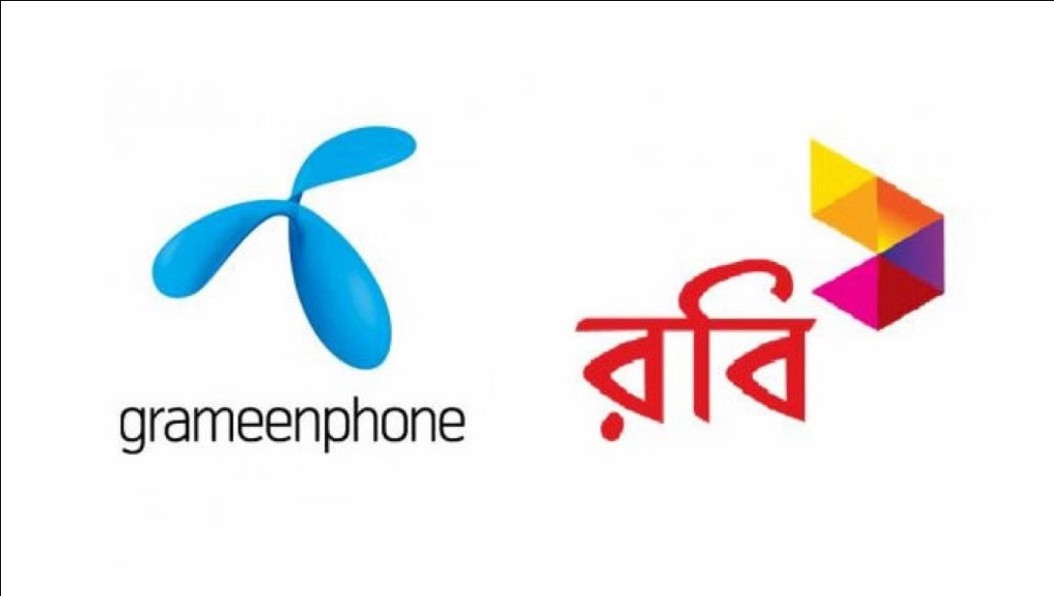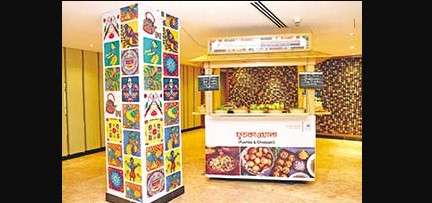The January–September 2025 earnings results of Bangladesh’s two largest telecom operators—Grameenphone (GP) and Robi Axiata—highlight a growing divergence in profitability driven by contrasting cost management and financing strategies.
While Robi’s profit rose 55 percent year-on-year to Tk 625 crore, GP’s earnings declined as the broader economic slowdown weighed on revenue and margins. It is said in its financial statements released today.
Earlier on Sunday, GP, the largest telecom operator in the country, posted a profit of Tk 2,264 crore for the period, a 23 percent decline YoY.
Both, however, reported lower revenues as consumer spending remained subdued. GP’s revenue dropped 1.3 percent year-on-year to Tk 11,947 crore in the nine months, while Robi’s revenue fell 2.4 percent to Tk 7,407 crore.
The difference in profits largely stems from the companies’ financing and cost management.
GP’s finance costs rose 33 percent to Tk 453 crore during the January-September period, driven by higher interest expenses on lease liabilities, which jumped about 23 percent. Robi, in contrast, reduced its net finance costs by 5 percent to Tk 519 crore, thanks to a 2 percent drop in interest expenses on lease liabilities.
Lease liabilities represent a company’s obligation to make payments for leased assets over time.
Operating costs also moved in opposite directions. For GP, they climbed to 64 percent of total turnover from 61 percent last year. Robi, meanwhile, brought its operating costs down slightly to 79 percent of turnover from 78 percent, which is still far higher than its rival’s.
This efficiency gap explains why Grameenphone’s profit margin – the profit a company can make from its turnover – stood at 18.9 percent, more than double Robi’s 8 percent, despite the latter’s higher growth rate.
“Both companies’ turnovers declined, which signals the overall weakness in the economy,” said Asif Khan, president of CFA Society Bangladesh.
“Grameenphone’s efficiency has been historically high, leaving little room for further improvement. Robi, on the other hand, benefited from efficiency gains, allowing profits to rise despite lower revenue.”
In a statement yesterday, Grameenphone, however, said its revenue in the July–September quarter grew 1.4 percent year-on-year, with cost increases limited to 1 percent despite inflation above 8 percent.
It said the overall economic climate still remains stagnant, and growth across markets is slower than what the company had anticipated.
“Despite these external challenges… we are back to growth, with stable margins and solid execution across our key business areas,” said Otto Magne Risbakk, chief financial officer of Grameenphone.
Although net profits were affected by higher depreciation and amortisation costs arising from capitalisation impacts, along with some cost increases from new site deployments and rooftop leases, GP’s profit margin is still strong, he added.
GP CEO Yasir Azman added that the company expects short-term economic momentum ahead of the national election to lift telecom demand: “We expect to capture renewed customer demand and reinforce our role in national connectivity.”
Data show that it is getting higher revenue from its larger customer and network base.
The company’s lease revenue rose by 4 percent to Tk 173 crore in the nine-month period, while for Robi, the figure went up slightly to reach Tk 45 crore.
Robi’s Managing Director and CEO Ziad Shatara said the third quarter of the year faced some headwinds from the extended monsoon, which impacted telecom spending by subscribers.
“Nonetheless, we are pleased with the strong momentum in our cost-efficiency programme, which continues to provide us with the flexibility to sustain growth. We remain confident in our trajectory going forward,” Shatara said.
Grameenphone ended September with 8.56 crore subscribers, including 5.12 crore internet users. Robi’s active subscriber base stood at 5.75 crore, of which 4.48 crore were internet users.
Source: Daily Star Online





